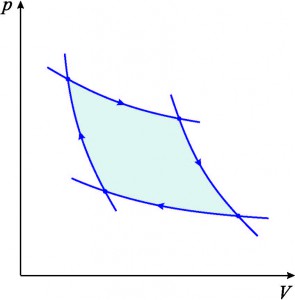ELSI Blog
28 Artificial Life: Thermodynamics and Infodynamics

In my previous blog entry, I wondered what we can learn about the question "What is life?" once we have learned how to create a living system in the laboratory, starting only with simple chemical ingredients. Of course, it is always difficult to predict what we can learn from an expected breakthrough that hasn't happened yet. The best we can do is try to learn from the past, by looking for analogies.
The best analogy I can think of is the invention of the steam engine. On a purely metaphorical level, a steam engine gives an impression of being more 'alive' than previous machines driving by wind or water power. A steam engine allows its operator to engage in purposeful actions. A steam ship allows us to go anywhere anytime, whereas a sailing ship leaves us depending on the wind. Steam engines thus provide a degree of autonomy lacking in other, earlier, technical inventions.
If you had asked the inventors and early builders of steam engines what the essence of a steam engine is, they may have answered: "well, we make them from rods and pistons and wheels, those are the main ingredients". Or a bit more general, "we use water and fire as the main elements that make it work". Or a bit more abstract, "we use the pressure that is generated by turning water into steam, which provides a huge power that can do useful work."
However, no matter how much detail will be added, to the point of making it possible to build your own steam engine by following a detailed recipe or blueprint, that in itself will not lead to a really deep understanding of the physics behind steam engines. For the latter to happen, we had to wait for various fundamental theoretical breakthroughs to occur.
For starters, Carnot had to invent his Carnot cycle as a much more abstract way to catch the essence of the processes involved in running a steam engine. No amount of staring at water and fire and pistons in itself would have given you the insight that Carnot had, about how to measure the amount of useful work that can be generated in principle, given certain temperature and pressure difference. But it took a long time for that insight to arrive, in 1823, half a century after James Watt successfully produced his efficient types of steam engines, which were soon used in building steamboats.
The concept of entropy was introduced a quarter century later, by Clausius in 1850, and in 1875 Boltzmann made a precise connection between entropy and molecular motion. It is a sobering thought that it took a full century from Watt to Boltzmann. My guess is that it will also take quite a long time, from the time we can create artificial life in the lab, to the time where we feel we really understand what we have produced. At first, we will describe our inventions on the level of rods and pistons, in the case of artificial life on the level of biochemistry networks of reactions. Only gradually will we reach more fundamental insights, akin to Carnot diagrams, the laws of thermodynamics, and concepts like entropy.
What such a new branch of science will look like, nobody can predict. I expect it to be a biological analogue to thermodynamics, but not based on the motion of heat ("thermo") but rather on the motion of information, so perhaps it will eventually be called "infodynamics". What distinguishes a living cell from non living processes is connected with the way information is used actively to regulate the metabolism and procreation of the cell. I wish I could get a peek into a science textbook of the early twenty-second century; the first thing I'd search for is a heading called "infodynamics".











